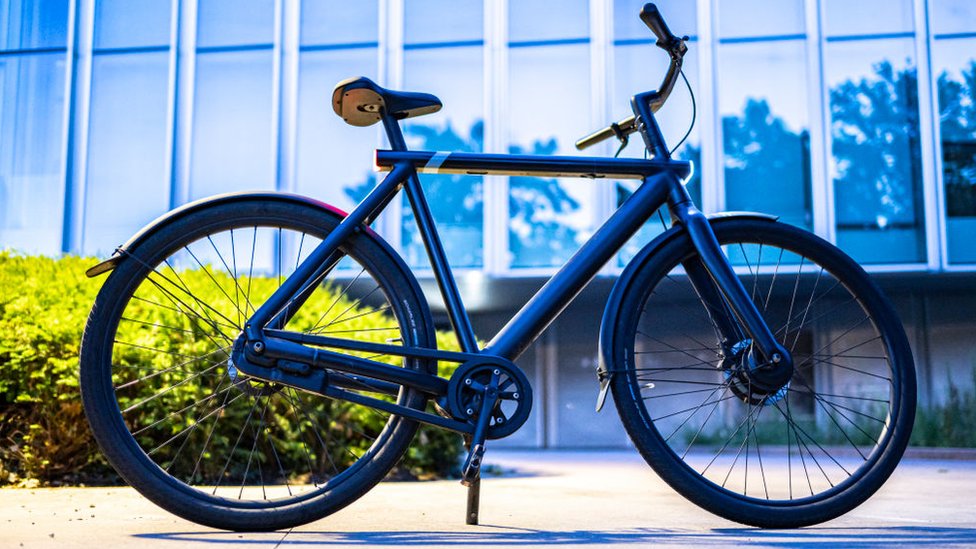Imagine spending thousands of dollars on a brand-new e-bike, only for it to arrive damaged. This was the reality for many customers of VanMoof, a Dutch e-bike company, when they expanded their operations to the United States. The company faced an alarming problem: one in four bikes arrived at its destination broken, despite their best efforts to improve shipping practices. But in a twist of ingenuity, VanMoof found a solution that was more psychological than practical.
Here’s the fascinating story of how a simple idea reduced shipping damage by 80%, and the lessons it holds for businesses everywhere.
The Challenge: Damaged Deliveries
When VanMoof entered the U.S. market, their sleek and innovative e-bikes quickly gained popularity. However, the company faced a logistical nightmare: shipping damages. These high-end bikes, carefully designed to combine aesthetics and performance, were often arriving in pieces, leaving frustrated customers and tarnishing VanMoof’s reputation.
VanMoof tried multiple approaches to solve this issue:
- Different shipping partners were hired, hoping for more reliable handling.
- Improved packaging with tougher boxes and additional padding was tested.
- Fragile labels were added to the boxes to signal caution.
Unfortunately, none of these methods yielded the desired results. Every attempt seemed to hit a dead end.
The Breakthrough Idea: Thinking Outside the Box (Literally)
In a moment of inspiration, VanMoof’s team asked themselves: What items do shipping handlers treat with extra care?
The answer? Flat-screen TVs. Handlers are conditioned to handle TV boxes more cautiously because they are perceived as fragile and expensive. With this insight, VanMoof made a bold decision: they printed the image of a flat-screen TV on their bicycle boxes.
This simple design tweak created the illusion that the box contained a TV rather than a bike.
The Results: An 80% Reduction in Damages
The impact of this psychological hack was immediate and dramatic:
- Shipping damages fell by 80% almost overnight.
- Handlers treated the boxes with far greater care, even though the contents remained unchanged.
- VanMoof saved countless bikes and repaired their reputation in the process.
This creative solution demonstrated the power of psychology in solving practical problems. By leveraging human perception and behavior, VanMoof turned a shipping crisis into a masterclass in problem-solving.
Lessons from VanMoof’s Strategy
The story of VanMoof holds valuable lessons for businesses looking to solve challenges in innovative ways:
- Understand Human Behavior:
Sometimes, the best solutions are not about more resources or better technology but understanding how people think and act. VanMoof’s strategy succeeded because it leveraged handlers’ natural caution toward TV boxes. - Experiment with Small Changes:
The image of a TV was a small and inexpensive adjustment, but it delivered massive results. This shows the value of testing creative ideas, even when the solution seems unconventional. - Think Beyond Conventional Solutions:
VanMoof could have continued investing in tougher packaging or blaming shipping partners. Instead, they reframed the problem, leading to a solution outside the traditional scope of logistics. - The Scarcity of Psychological Insights:
While technical fixes are often the go-to, businesses should not underestimate the power of psychological hacks to drive tangible results.
A Bittersweet Ending
While this ingenious strategy improved shipping outcomes, it wasn’t enough to save VanMoof from financial struggles. The company declared bankruptcy in 2023, citing other challenges such as cash flow issues and scaling problems. Despite this, the “TV box trick” remains a powerful example of creative problem-solving that continues to inspire entrepreneurs and businesses worldwide.
Conclusion: Simple Ideas, Big Impact
VanMoof’s story is a compelling reminder that innovation doesn’t always require complex solutions. By observing behavior and thinking creatively, even the most stubborn challenges can be overcome.
Whether you’re facing shipping issues or other operational hurdles, the key takeaway is to approach problems with an open mind and explore psychological, not just practical, solutions.
If you’re ready for more stories and insights like this, don’t forget to follow us and stay tuned!


